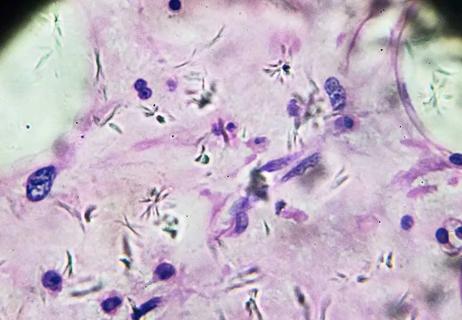Prioritize protein and fresh produce, but be extra careful to avoid bacteria that could cause foodborne illnesses

If you’re living with cancer, you already have a lot on your mind. The last thing you probably want to think about is what’s for dinner tonight. But how you eat can make a big difference in how you feel, so it’s worth some thought.
Advertisement
Cleveland Clinic is a non-profit academic medical center. Advertising on our site helps support our mission. We do not endorse non-Cleveland Clinic products or services. Policy
There’s no definitive “cancer diet.” But registered dietitian in oncology, Kim Geiringer, RD, LDN, explains why what you eat matters, and which foods may help you feel your best.
When you have cancer, following a healthy diet can help you:
But your dietary needs may look different from what they did before. For example, you may need more calories now to help maintain your weight, and you might need more protein now to keep your energy levels high.
“Cancer treatments also make you more prone to illnesses, including food poisoning,” Geiringer says. “This requires you to take extra safety precautions you may not have considered in the past.”
Think about what’s on your plate as part of your overall approach to managing life with cancer. Following a balanced diet is healthy for everyone — but when you have cancer, it’s more helpful and important than ever.
When you’re living with cancer, the best foods are the ones that give you energy, fuel your immune system and keep your body well-nourished.
“Cancer patients benefit from a diet that will keep their bodies strong, particularly as they fight cancer with chemo, radiation and other treatments,” Geiringer says.
Advertisement
Here’s what to incorporate into your diet.
Protein is especially important when you’re living with cancer.
“I always advise cancer patients to eat their protein first, especially if they’re having trouble eating as much as they normally would,” Geiringer advises. “Then, if you still have an appetite, you can move on to other food groups. But if it’s a tough day and you don’t have much appetite, at least you’ll get your protein in.”
Why does it matter so much? Two big reasons:
How much protein you need will vary. On average, people who don’t have cancer should aim for about 1 gram of protein per kilogram (kg) of body weight. (Only know your weight in pounds? Divide your weight by 2.2 to get your weight in kg.)
When you’re undergoing cancer treatments, add 20 grams to that baseline. For example, a 175-pound person weighs 79 kg. Typically, they should aim for about 79 grams of protein a day. But during treatment, that goes up to 99 grams of protein daily.
Those numbers might seem jarring, especially if you’re already struggling to get enough protein. But your care team can help you find a realistic way to get the nutrients you need.
“These are just rough general estimates,” Geiringer clarifies. “Always talk with a registered dietitian to get a more precise goal that considers your personalized needs.”
Healthy sources of protein include:
If you’re feeling nauseated, Geiringer says that it may be easier to sip on a protein shake. There are convenient options available when you have a day full of appointments and treatments. If you’re replacing a meal, choose a shake in the 350-calorie range. As a snack or an accompaniment to a meal, aim for a 150-calorie shake.
Antioxidants defend against free radicals, which are unstable molecules that cause cellular damage. And when you’re facing cancer, strengthening those defenses is critical.
“If you think of your body as a pinball machine, free radicals are the ball bouncing all over the place and causing trouble,” Geiringer illustrates. “They can damage your cells and DNA. And that opens the door for mutations, which can lead to chronic diseases.”
Advertisement
Antioxidants are naturally occurring chemicals found in fruits, veggies and other whole foods. They help fight free radicals.
“Colors can tell us a lot about the antioxidants in our foods,” she adds. “When you have a variety of colors in your diet, it’s a sign that you’re getting a range of vitamins and minerals.”
To get the full mix of antioxidants, eat all the colors of the rainbow. Try:
“Carbohydrates provide your body with glucose, which is needed everywhere from your brain to your digestive system and more,” Geiringer explains.
Opt for whole grains over refined carbs, choosing options like:
You might’ve heard that you should completely avoid carbs and sugar as part of a healthy cancer diet. But it isn’t true.
So, where did that idea come from?
“Some lab studies show that cancer cells in petri dishes grow when they’re exposed to sugars, including carbohydrates and added sugar. But that’s true of any cells in your body,” she continues. “Your brain cells and muscles feed on sugar, too. So, the idea that cancer cells will eat up sugar and multiply isn’t how it works in the real world.”
Advertisement
Stick to 25 grams or less of added sugars for women and 36 grams or less for men. But there’s no need to add extra stress to your life by worrying that a sweet treat or a slice of bread will affect your cancer.
When you’re living with cancer, it’s important to stay well-hydrated to keep your systems flowing. Literally. How much water you should drink every day varies by person, but work toward eight to 10 cups (64 to 80 ounces) per day.
Not a big water fan? Jazz up the taste to encourage yourself to drink more. Squeeze in some lemon or lime, add a sugar-free flavor packet or infuse it with fresh fruit and herbs.
“You can also try different temperatures,” Geiringer suggests. “Some people prefer room-temperature water, while others like it icy. Either is fine, as long as you drink it.”
Certain foods and drinks can increase inflammation in your body. In general, they should be limited (or avoided entirely) when you’re following a healthy diet:
When you’re living with cancer, your immune system can take a hit. So, you want to be extra careful about preventing foodborne illness.
“Always wash your hands well before, during and after preparing food,” Geiringer states. “And thoroughly clean all surfaces and utensils that have been in contact with raw animal products.”
Advertisement
Animal protein should be thoroughly cooked first. That includes:
“We never recommend eating raw or undercooked meats, fish or eggs, and that’s especially true if your immune system is compromised,” Geiringer emphasizes. “If there’s even a little bit of bacteria in those foods, you’re much more likely to get sick.”
The health benefits of eating fresh produce outweigh the risk of contamination — but you should still be cautious. Geiringer advises washing all fruits and vegetables in a vinegar soak consisting of one part white vinegar to three parts water.
“That even includes the outsides of foods you don’t eat, like banana peels and watermelon rinds,” she says. “When you slice into those foods, any germs from the outside can make their way to the inside.”
Avoid unpasteurized (raw) dairy and juices, which carry a high risk of bacteria like Salmonella, E. coli and Listeria.
In the U.S., milk, cheese and other dairy products are highly regulated. But juices are a little dicier. This is one instance where you’ll want to avoid anything that seems super-fresh, like juices made at juice bars, farmer’s markets or your best friend’s kitchen.
In the past, you might not have thought twice about eating something slightly past its “best by” date. But now, it’s important to pay attention to expiration dates and how food looks and smells:
Side effects of chemotherapy and radiation can include eating-related problems, like:
“These side effects can make it hard to maintain a healthy diet,” Geiringer acknowledges. “If you’re experiencing any of them, talk to your healthcare team so they can help you figure out a way forward.”
Living with cancer is tough enough. And when you have so much to deal with, following a strict or restrictive diet won’t do your body any favors — physically or mentally.
“Focus on eating as well as you can, prioritizing protein and keeping food safety top of mind,” Geiringer urges. “And don’t hesitate to talk with your oncology team about how you can best manage your health with diet before, during and after cancer treatment.”
Learn more about our editorial process.
Advertisement

Here’s how (and why) to ask your doctor about treatment goals, second opinions, clinical trials and more

Rates of early-onset breast, colorectal and GI cancers are increasing, but preventive care and a healthy lifestyle can help reduce your risk

The side effects of cancer and treatment can impact desire, sexual function and intimacy, but there are ways you can keep the flame going

Decisions you make regarding smoking, alcohol use, meal choices and exercise can make a big difference

Taming fear and reclaiming your future after treatment

Carcinomas are the most common and affect skin and organs

7 healthy eating tips to help reduce your risk of some of the most common types of cancer

Research on the controversial issue is mixed, but there are safety precautions you can take

Start having sex about 72 hours before ovulation, then at least every other day during your fertile window

Attachment theory suggests that your earliest relationships shape connections throughout your life

It isn’t a recognized mental health disorder, but research shows that problematic social media use can negatively affect your mental health, self-esteem and sleep